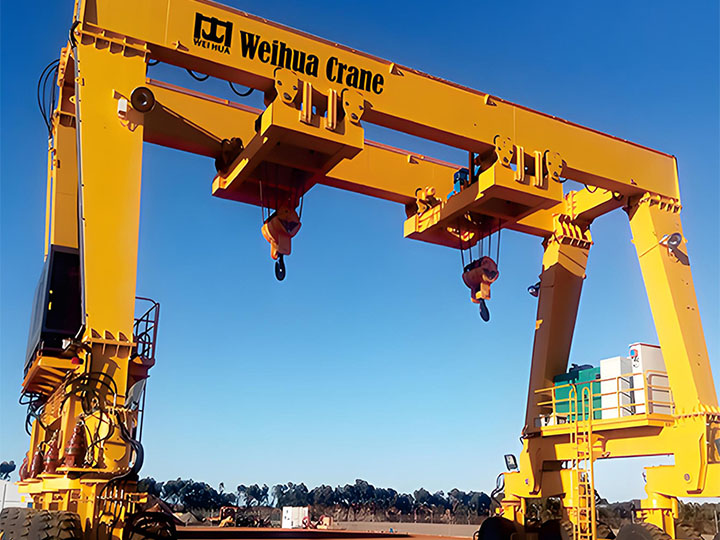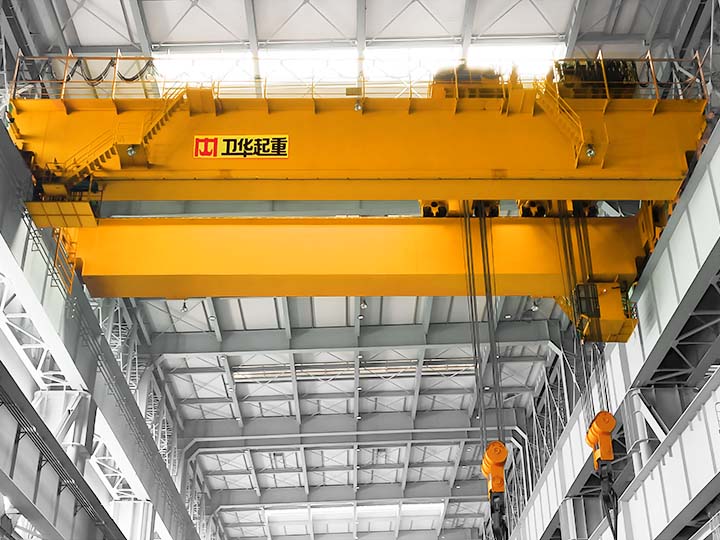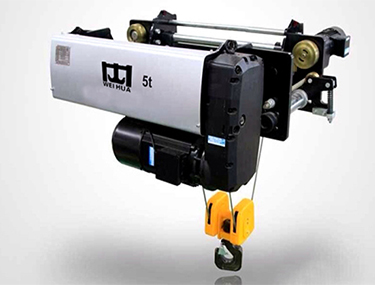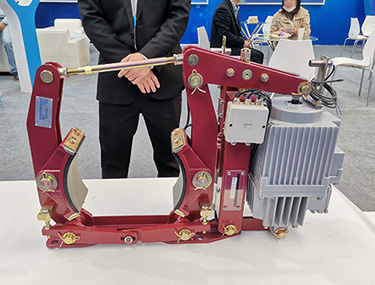Gantry cranes and bridge cranes are two common lifting equipment, widely used in industries, ports, warehouses and other fields. They have their own characteristics in structure, function and usage scenarios. The following is a detailed comparison:
1. Gantry Crane
Structural features:
Support method: Supported by the legs (gantry) on both sides on the ground track or fixed foundation to form a "door" shaped structure.
Beam: The main beam spans the legs on both sides and can be equipped with a single beam or a double beam.
Mobility: Usually moves along the ground track, and some models (such as tire-type gantry cranes) do not require tracks.
Classification:
Rail-type gantry crane: runs on fixed tracks, has high stability, and is suitable for fixed working areas.
Rail-type gantry crane (RTG): trackless, flexible and mobile, commonly found in container yards.
Shipbuilding gantry crane: super large tonnage, used for shipbuilding.
Advantages:
Large span: suitable for open-air sites such as ports, yards, and construction sites.
Strong carrying capacity: can be designed with lifting capacity of hundreds to thousands of tons.
Strong adaptability: not limited by the height of the plant, can work in harsh outdoor environments.
Disadvantages:
Large footprint: need to lay tracks or reserve moving space.
High cost: large gantry cranes are complicated to manufacture and install.
Typical applications:
Container loading and unloading, shipyards, large steel structure installation, wind power equipment hoisting.
2. Overhead Crane
Structural features:
Support method: Both ends of the main beam are supported on the track (traveling beam) above the plant by wheels, without ground legs.
Operating space: Move horizontally on the track supported by the plant wall or column, and the trolley runs longitudinally along the main beam.
Fixedness: usually fixed inside the building.
Classification:
Single-beam bridge crane: light structure, suitable for light lifting (≤20 tons).
Double-beam bridge crane: good stability, suitable for large tonnage (up to hundreds of tons).
Suspended bridge crane: The main beam is suspended under the roof structure to save space.
Advantages:
Save ground space: does not occupy the ground track, suitable for intensive operations in the factory.
Smooth operation: the track is at a high place and is less disturbed by the ground.
Flexible operation: can be operated with remote control or cab.
Disadvantages:
Depends on the factory structure: the building needs to have sufficient load-bearing capacity.
Limited span: limited by the width of the factory, generally not more than 30-40 meters.
Typical applications:
Material handling in the workshop, hoisting of production lines, loading and unloading of warehouses, and mechanical assembly.
Gantry cranes and bridge cranes selection recommendations
Choose a gantry crane:
Requires outdoor operations, large spans, and large lifting weights (such as ports, wind power, and shipbuilding).
Choose a bridge crane:
Lifting in a fixed area in the factory, limited space, and frequent operations (such as factory workshops).
According to the comprehensive evaluation of specific needs (lifting weight, span, environment, budget), special scenarios can also consider a hybrid design of the two (such as a semi-gantry crane).





